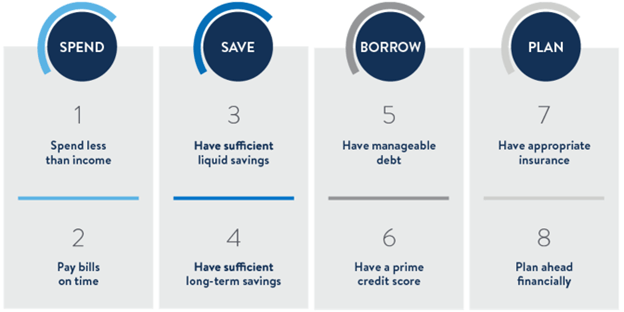Good Plan Design Can Help Lead To Financial Wellness
Facilitate employee financial wellness with an optimized retirement plan design
“Employee financial wellness” has become a favorite buzz phrase over the past decade, and the COVID-initiated economic challenges of the past few years are making it more of a necessity.
Employee financial wellness programs have become a key focus of employers. Participating in the optimal retirement plan can help employees on the path toward financial wellness, and offering a great plan can help employers attract and retain top talent in a tight labor market.
But what exactly is employee financial wellness, and how is it measured? Is it a point-in-time or a continuum or both? Is it measured by a credit score, bank statement, retirement plan account balance or other? When is someone “financially well?” While there is no single, agreed-upon definition, there are several common characteristics that surveys, researchers and companies use in practice.
The Financial Health Network (FHN) is a not-for-profit organization that pioneered financial wellness research starting in 2004, and continues its work. Over the years FHN has come to define financial wellness as “a composite measurement of a person’s financial life.”
The FHN explains, “Unlike narrow metrics like credit scores, financial health assesses whether people are spending, saving, borrowing, and planning in a way that will enable them to be resilient and pursue opportunities over time.”
Following the Great Recession of 2007-2009, the Consumer Financial Protection Bureau (CFPB) turned up the magnification on employee financial wellness. It found that in the wake of the recession, many employers saw how financial distress reduces worker productivity, increases absenteeism, and undermines employees’ health.
The CFPB sees achieving financial wellness as a comprehensive approach. Industry surveys define financial wellness programs as those that assess and support an employee’s “complete financial picture” or the “overall financial health of an individual.” The distinction here is that financial wellness programs do not take a snapshot approach, focusing on a single aspect of financial planning such as retirement or college savings. Financial wellness programs look at how all the pieces of an individual’s financial life fit together.
FHN focuses on eight indicators of financial health that relate to spending, saving, borrowing and planning:
Eight Indicators of Financial Health




